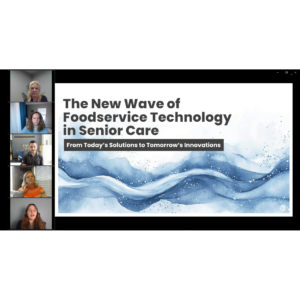Is your technology lagging behind?
Compared to other healthcare providers, the long-term care industry has been slower to adapt evolving technologies such as electronic health records, eMAR systems and clinical care technology, including rehabilitation and brain fitness technologies.
A report released this week by LeadingAge’s Center for Aging Services Technologies (CAST) offers 18 case studies highlighting both the opportunities and barriers for technology in aging services. It’s a revealing look at how providers are using technology to change their business models while addressing the challenges they face in implementing technology—including costs and lack of collaboration both among organizations’ departments and staff.
Sure, the big industry chains have the infrastructure and greater financial resources to make costly investments in technology. As for the smaller, mom-and-pop facilities? Not so much, at least not now. I recently spoke with a single-facility provider who looked at me like I was crazy when I asked about her SNF’s technology tools for working with the MDS. “It’s all done on paper,” she said matter-of-factly. She went on to explain that the owner was “very conservative” when it came to any kind of operational investments, but that’s also how they’d survived recent financial challenges.
Other industry reports reflect these anecdotes. Long-Term Living surveyed its readers earlier this year on technology usage with the majority of respondents (facility administrators and directors of nursing) indicating that while spending on technology solutions this year may be somewhat anemic due to budget limitations, many anticipate adopting a range of technologies over this year and into 2012, with EHRs, eMAR systems, clinical software and point-of-care documentation tools topping their purchase lists.
| Source: Senior Living 100 |
For a birds-eye view, Lincoln Healthcare Events surveyed executive leaders for its 2012 inaugural Senior Living 100 conference (click graph for full results). Respondents said the top three technology issues that will potentially have the highest impact on their organizations and residents over the next 5-8 years include: social media technologies (communication, wellness, education); EMR/assessment/scheduling/transition planning; and new metrics (technology-assisted data mining.)
Regardless of where you and your organization fall on the scale of technology implementation, it’s imperative to educate yourself and your team for future adaptation. There are many resources available, from online learning programs and conference seminars to white papers and webinars. For a primer on adding technology to your community, consider checking out a webinar Long-Term Living is offering December 13 titled “The ABCs of Adding Technology: A Provider’s Primer to Automation.” The program will instruct providers on how to develop a technology plan, take inventory and develop goals for implementation while understanding how to ensure usability by the team.

Patricia Sheehan was Editor in Chief of I Advance Senior Care / Long Term Living from 2010-2013. She is now manager, communications at Nestlé USA.
Related Articles
Topics: Technology & IT











